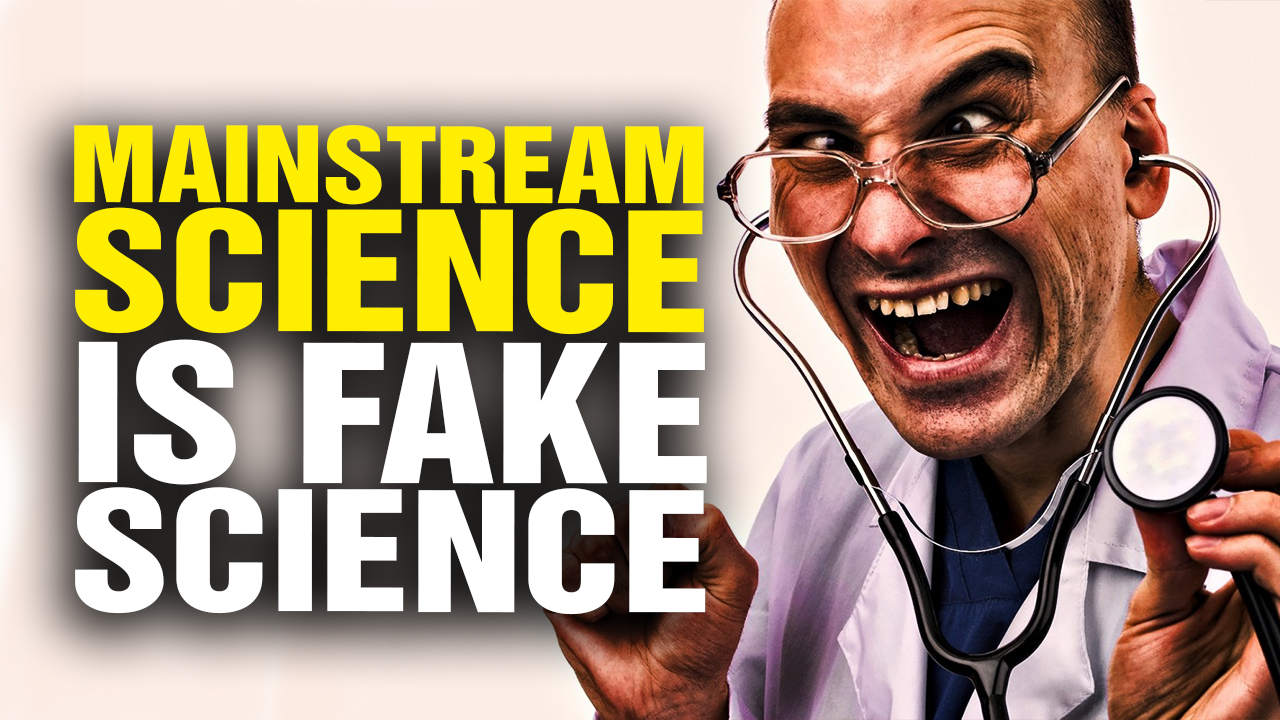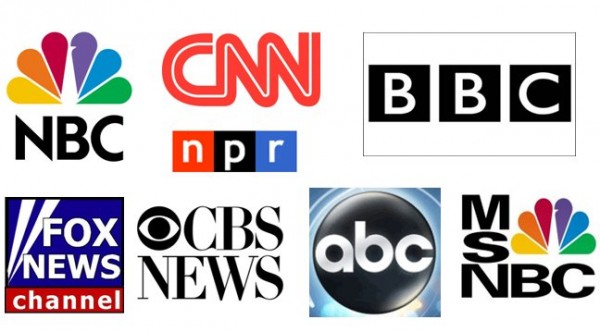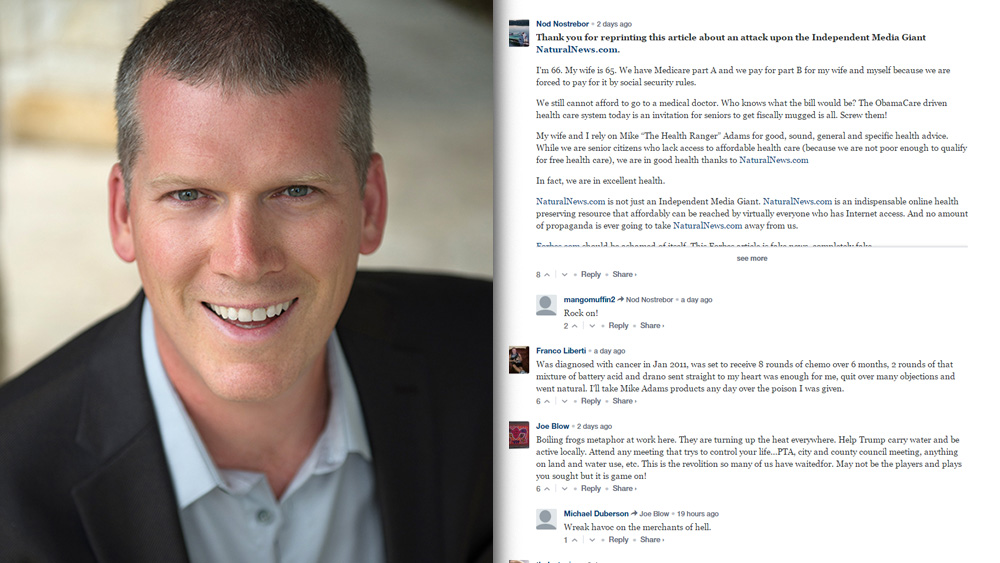Science is BROKEN, and the peer-review process produces “utter bulls##t” parading around as real science
02/19/2018 / By Mike Adams

Much of what gets published in so-called “science journals” or “medical journals” is actually complete “bulls##t,” warn many observers. Brendan D. Murphy has authored a spectacular piece published by Waking Times, offering astonishing details in support of that notion.
His full article is reprinted here. Find the original at this link. See more work by Brendan Murphy at BrendanMurphy.net.
WHY SCIENTIFIC PEER REVIEW IS A SHAM
In recent years the defects in the peer review system have been the subject of a profusion of critical editorials and studies in the literature. It is high time that the world took heed of what the critics are saying, not least of all because of the medical and health ramifications.
The notion of peer review has long occupied special territory in the world of science. However, investigation of suppressed innovations, inventions, treatments, cures, and so on, rapidly reveals that the peer review system is arguably better at one thing above all others: censorship. This can mean censorship of everything from contrarian viewpoints to innovations that render favored dogmas, products, or services obsolete (economic threats).
The problem is endemic, as many scientists have learned the hard way.
In truth, the systemic failure of peer review is one of science’s major, embarrassing open secrets.
As Dr David Kaplan tells us, “[P]eer review is known to engender bias, incompetence, excessive expense, ineffectiveness, and corruption. A surfeit of publications has documented the deficiencies of this system.”[1]
Australian physicist Brian Martin elaborates in his excellent article Strategies for Dissenting Scientists:
Certain sorts of innovation are welcome in science, when they fall within established frameworks and do not threaten vested interests. But aside from this sort of routine innovation, science has many similarities to systems of dogma. Dissenters are not welcome. They are ignored, rejected, and sometimes attacked.[2]
Electric universe researcher and Big Bang critic Wal Thornhill (a REAL scientist) stated plainly in our GFM Media interview that the peer review system amounts to censorship. Fellow independent scientist Gary Novak agrees scathingly:
“Peer review is a form of censorship, which is tyranny over the mind. Censorship does not purify; it corrupts…There is a lot of junk science and trash that goes through the peer review process.”[3]
Brian Martin asks us rhetorically:
What do [scientists] have to gain by spending time helping an outsider? Most likely, the alleged discovery will turn out to be pointless or wrong from the standard point of view. If the outsider has made a genuine discovery, that means the outsider would win rewards at the expense of those already in the field who have invested years of effort in the conventional ideas.[4]
Herein lies the problem in moving science forward and shifting paradigms. A paradigm is only as malleable (or mutable) as the minds and egos invested in it.
The Problem of “Experts”
The reality is (as any real scientist will tell you) that scientists are prone — just like lay people — to being cathected to their pet theories and opinions, especially if they have been visibly rewarded or publicly obtained accolades or financial remuneration as a result. Scientists, like laypeople, have susceptible emotional bodies and often fairly hefty egos — partially due to their “expertise” and academic titles, qualifications, theories, etc.
Once those hefty egos — belonging to people generally known as “experts” — rise to positions of power and/or influence, they can calcify the flow of scientific progress as well as the understanding of new discoveries or theories — particularly if they end up acting as “peer reviewers” at high levels in prestigious publications. In that capacity, too many become mere gatekeepers and seek not to facilitate innovation or vital new Copernican-scale revelations, but to maintain the status quo which got them there in the first place.
Dr Malcolm Kendrick comments in his excellent book Doctoring Data that, “by definition, anyone who is an ‘expert’ in an area of medicine will be a supporter of whatever dogma holds sway.”[5]Close study of power dynamics in medicine bears this out. The players with the deepest pockets have the funds to buy all of the “experts” they need to sell a bogus product or ideology to an unsuspecting public.
Consider the following words from The Lancet’s editor Richard Horton (pictured below):
The mistake, of course, is to have thought that peer review was any more than a crude means of discovering the acceptability — not the validity — of a new finding…We portray peer review to the public as a quasi-sacred process that helps to make science our most objective truth teller. But we know that the system of peer review is biased, unjust, unaccountable, incomplete, easily fixed, often insulting, usually ignorant, occasionally foolish, and frequently wrong.[6] (emphasis added)
The Lancet’s editor Richard Horton
Peer review, as a “quasi-sacred” process that somehow supposedly transcends the foibles and follies human nature has taken on sacred ritual status. Has the paper been blessed by the Peer Review Priest? Peer review is held to be more than just pragmatically useful and functional (which clearly it is not, generally speaking) — it is held as a transcendent, almost magical, organizing force occurring in the heavenly ivory towers of Science, which somehow avoids falling prey to human weaknesses by virtue of those humans’ lofty qualifications as “scientists” or “experts.”
Scientists, of course, aren’t quite human — they are something more, something pure, something that the layman can never be. Students undergo a magical alchemical process as they proceed through educational institutions and emerge transformed from their chrysalis with their doctorates, masters, stethoscopes and equations. They are the Chosen Ones, the purified, the holy, the redeemed, the righteous. They do not have to answer to the lowly non-scientific peasantry – let alone unbelieving heretics.
It is clear, however, that not only is the popular view of peer review misleading, but the most prestigious publications are some of the very worst offenders. Significant scientific publications — for example, the journal Nature — have a well documented history of prejudice against findings or hypotheses that run contrary to established scientific dogma.
Writing in the British Medical Journal (BMJ) in May 2000, Canadian-based researcher, David Sackett, said that he would “never again lecture, write, or referee anything to do with evidence based clinical practice,” over his concern that “experts” are stifling new ideas. He wants the retirement of experts to be made compulsory and I think it’s a brilliant proposition.
Sackett says that “…progress towards the truth is impaired in the presence of an expert.”[7]
Trusting “experts” in oncology, for example, is generally a very good way to artificially speed one’s trip to the grave, particularly if one has metastatic cancer (allopathic medicine is notoriously ineffective in that realm). And yet “experts” are now on a rarified level that perhaps only popes and celebrities can understand — they are virtually demigods today.
In the main, “experts” are those people in the establishment who espouse the mainstream dogma and reify the politically correct belief structures. “Experts” are lionized because the world that made them experts promotes and validates them when they affirm the already established (and profitable) beliefs — and the media is complicit in this. If you want to be horribly misled on any number of important issues, just head straight to just about any mainstream news media outlet and listen to the establishment’s “experts.”
Is it not time to get the crusty, rigidified, and corrupt Old Guard out of the way so we can let science move forward?
Is Most Research Just Bullshit?
Harvard Medical School’s Dr. Marcia Angell is the former Editor-in-Chief at the New England Journal of Medicine, where she spent twenty years poring over scientific papers, saturated in the dubious practices that pervade the world of medical research. She states bluntly:
It is simply no longer possible to believe much of the clinical research that is published, or to rely on the judgment of trusted physicians or authoritative medical guidelines. I take no pleasure in this conclusion, which I reached slowly and reluctantly over my two decades as an editor of The New England Journal of Medicine.[8]
Most “experts” in medicine are, psychologically speaking, simply engaged in well-paid groupthink and confirmation bias exercises, vigorously affirming and defending their ego’s (lucrative) construction of the world. To paraphrase physicist Max Planck, medicine, like science, “advances one funeral at a time.”
Once the public has accepted the scientific establishment’s truths, narratives, and designated “experts” then researchers who yield findings deviating from the accepted norm can be immediately branded as crackpots, lunatics, fringe nuts, pseudo-scientists and so on, regardless of how meticulous their methods, and irrefutable their results.
The media is crucial in this control dynamic because it sells the establishment’s reality.
Thus is the politically correct status quo maintained.
Peer “Review” Lets Garbage Through — and Lots of it!
“Peer review” censorship exemplifies the neophobia in the world of science which serves to protect the status quo rather than improve knowledge by weeding out dubious epistemologies and results, as it is meant to. This supposed mechanism of “quality control” has resulted not only in the dismissal of much important and credible research, but it has also let fraudulent research –and lots of it! — be published at the same time. Papers that appear to support fashionable ideas or entrenched dogmas are likely to fare well, even if they are badly flawed — or outright rubbish!
David Kaplan, a professor of pathology at the Case Western Reserve University School of Medicine in Cleveland, has stated that,
Peer review is broken. It needs to be overhauled, not just tinkered with. The incentives should be changed so that: authors are more satisfied and more likely to produce better work, the reviewing is more transparent and honest, and journals do not have to manage an unwieldy and corrupt system that produces disaffection and misses out on innovation.[9]
Is it any wonder that John Ionnidis reported in his famous 2005 paper that, “Most research findings are false for most research designs and for most fields”? Given the already outlined problems, is it really surprising that, in Ionnidis words, “Claimed research findings may often be simply accurate measures of the prevailing bias”?[10]
Dr. Marc Girard, a mathematician and physician who serves on the editorial board of Medicine Veritas (The Journal of Medical Truth), has written,
The reason for this disaster is too clear: the power of money. In academic institutions, the current dynamics of research is more favourable to the ability of getting grants — collecting money and spending it — than to scientific imagination or creativity.[11]
In general, peer reviewers — generally not time-rich — don’t try to replicate experiments and rarely even request the raw data supporting a paper’s conclusions. Who has the time for all that? Thus, peer review is, according to Richard Smith writing in Peer review in health sciences,
thought to be slow, expensive, profligate of academic time, highly subjective, prone to bias, easily abused, poor at detecting gross defects, and almost useless for detecting fraud.[12] (emphasis added)
What about fake peer review? This is where the corrupt and abysmal becomes the theatre of the absurd. For example, Berlin-based Springer Nature, who publishes the aforementioned Naturejournal announced the retraction of 64 articles in 10 journals in an August 18th statement in 2015. This followed an internal investigation which found fabricated peer-review write-ups linked to the articles.
The purge followed similar discoveries of “fake peer review” by several other major publishers, including London-based BioMed Central, an arm of Springer, which began retracting 43 articles in March citing “reviews from fabricated reviewers”.[13]
Yes, that means reviewers that don’t exist — recommended as “reviewers” by the people submitting their work for review. Imagine writing a paper and being able to nominate a non-existent person to review your work, and the contact email supplied to the publisher for this purpose is actually one you made up, which routes the paper back to you (unbeknownst to the publisher), so that you can then secretly carry out a (favourable) review of your own work under a pseudonym!
It’s being done, folks, this is not a joke.
In response to fake peer review some publishers have actually ended the practice of author-suggested reviewers.[14]
And now for the Conceptual Penis…
Recently two scientists performed a brilliant Sokal-style hoax on the journal Cogent Social Sciences. Under the pen names “Jamie Lindsay” and “Peter Boyle,” and writing for the fictitious “Southeast Independent Social Research Group,” Peter Boghossian and James Lindsay wrote a deliberately absurd paper loosely composed in the style of “post-structuralist discursive gender theory” — what exactly that is they made no attempt to find out.
The authors tell us:
The paper was ridiculous by intention, essentially arguing that penises shouldn’t be thought of as male genital organs but as damaging social constructions…We assumed that if we were merely clear in our moral implications that maleness is intrinsically bad and that the penis is somehow at the root of it, we could get the paper published in a respectable journal.[15] (emphasis added)
And they did. After completing the paper, and being unable to identify what it was actually about, it was deemed a success and ready for submission, which went ahead in April 2017. It was published the next month after some editorial feedback and additional tweaking. To illustrate how deliberately absurd the paper is, a quote is in order:
We conclude that penises are not best understood as the male sexual organ, or as a male reproductive organ, but instead as an enacted social construct that is both damaging and problematic for society and future generations… and is the conceptual driver behind much of climate change.[16]
In plain English, they (seemingly) argued here that a penis is not a male sexual organ but a social construct; the “conceptual penis” is problematic for “gender (and reproductive) identity,” as well as being the “conceptual” driver of climate change. No, really. How this ever got published is something to ponder. The paper is filled with meaningless jargon, arrant nonsense, and references to fake papers and authors.
As part of the hoax, none of the sources that were cited were even read by the hoaxers. As Boghossian and Lindsay point out, it never should have been published. No one — not even Boghossian and Lindsay — knows what it is actually saying.
Almost a third of the sources cited in the original version of the paper point to fake sources, such as created by Postmodern Generator, making mock of how absurdly easy it is to execute this kind of hoax, especially, the authors add, in “‘academic’ fields corrupted by postmodernism.”[17] (emphasis added)
The Spectacular Success of Hoax Papers and Non-existent Authors
In April 2010, Cyril Labbé of Joseph Fourier University in Grenoble, France, used a computer program called SCIgen to create 102 fake papers under the pseudonym of Ike Antkare. SCIgen was created in 2005 by researchers at MIT in Cambridge in order to demonstrate that conferences would accept such nonsense…as well as to amuse themselves.
Labbé added the bogus papers to the Google Scholar database, which boosted Ike Antkare’s h-index, a measure of published output, to 94 — at the time, making Antkare the world’s 21st most highly cited scientist.[18] (emphasis added)
So a non-existent scientist has achieved the distinction of being one of the world’s most highly cited authors — while “authoring” papers consisting of utter gibberish. Congratulations are certainly in order. In February 2014 it was reported that Springer and the Institute of Electrical and Electronic Engineers (IEEE), were removing over 120 such bogus papers from their subscription services after Labbe identified them using his own software.
Going back at least as far as 1996 journalists and researchers have been getting spoof papers published in conferences or journals to deliberately expose weaknesses in academic quality controls. “Physicist Alan Sokal (of the famous Sokal Affair) succeeded in the journal Social Text in 1996,” while Harvard science journalist John Bohannon revealed in a 2013 issue of Science that he had duped over 150 open-access journals into publishing “a deliberately flawed study.”[19]Bohannon organized submission of the flawed study (technically, many different but very similar variations of the study) to 304 open access journals worldwide over a period of 10 months. 255 went through the whole editing process to the point of either acceptance or rejection.
He wrote:
Any reviewer with more than a high-school knowledge of chemistry and the ability to understand a basic data plot should have spotted the paper’s shortcomings immediately. Its experiments are so hopelessly flawed that the results are meaningless.[20]
The hoax paper was accepted by a whopping 157 of the journals and rejected by only 98. Of the 106 journals that did conduct “peer review,” fully 70% accepted the paper.[21]
If peer review was a transparent and accountable process, according to Gary Novak,
there might be a small chance of correcting some of the corruptions through truth and criticism; but the process is cloaked in the darkness of anonymity…Due to the exploitive and corrupt process, nearly everything in science has official errors within it…[A] culture of protecting and exploiting the errors creates an official reality which cannot be opposed.[22]
Returning specifically to the arena of (mainstream) medicine, a quote in PLoS Medicine, states:
“Journals have devolved into information laundering operations for the pharmaceutical industry”, wrote Richard Horton, editor of the Lancet, in March 2004. In the same year, Marcia Angell, former editor of the New England Journal of Medicine, lambasted the industry for becoming “primarily a marketing machine” and co-opting “every institution that might stand in its way”…Jerry Kassirer, another former editor of the New England Journal of Medicine, argues that the industry has deflected the moral compasses of many physicians, and the editors of PLoS Medicine have declared that they will not become “part of the cycle of dependency…between journals and the pharmaceutical industry”.[23]
In the words of John Ionnidis, “Most scientific studies are wrong, and they are wrong because scientists are interested in funding and careers rather than truth.”[24]
If most studies are wrong, and most scientists are more interested in their own careers and funding than getting at the truth — while journals daily allow bogus and flawed pharmaceutical research to be published and promoted — then why would anyone in their right mind believe the claims made by doctors about the efficacy of products based upon “peer review” or pharmaceutical “studies”? What does a term like “safe and effective” even mean in this world of deception and subterfuge?
Clearly the problem of corruption and conflicts of interest have been increasingly on the radar of professional academics for some time now, so much so that it has been the subject of an increasing number of harshly critical articles and editorials. Conveying the depth and breadth of deception to the “uninitiated,” however, presents a unique challenge. And it isn’t just conflict of interest and corruption to blame for the failure of peer review, there is human bias, shoddy review work, fake reviewers and fraud, and varying other human interests to factor in.
At the very least we need to cease indoctrinating students into the dogma that all good things have been peer reviewed, and the converse: anything that has not been peer reviewed is clearly blasphemous and crafted by the unholy hands of sinners. In the meantime, the public needs to be warned: peer review is largely a sham and will not protect you or your family from medical pseudo-science or dangerous pharmaceutical products. Your doctor’s word should not be blindly trusted, especially when we know that doctors rely absurdly heavily on information (read: propaganda) provided by the pharmaceutical industry itself (can you say “conflicted”?!) in developing their views and opinions.
I can’t help but cringe when I hear people ask if a study has been “peer-reviewed.” The response this question most often deserves is simply, “Who cares?”
The case against science is straightforward: much of the scientific literature, perhaps half, may simply be untrue. Afflicted by studies with small sample sizes, tiny effects, invalid exploratory analyses, and flagrant conflicts of interest, together with an obsession for pursuing fashionable trends of dubious importance, science has taken a turn towards darkness. — Richard Horton, Offline: What is medicine’s 5 sigma? The Lancet, 11 April 2015, thelancet.com (Horton is editor of The Lancet)
About the Author
Brendan D. Murphy – Co-founder of Global Freedom Movement and host of GFM Radio, Brendan D. Murphyis a leading Australian author, researcher, activist, and musician. His acclaimed non-fiction epic The Grand Illusion: A Synthesis of Science & Spirituality – Book 1 is out now! Come and get your mind blown at www.brendandmurphy.net
Tagged Under: junkscience, medical journals, medical science, peer review, rational, science, science clowns, science journals, scientific fraud, scientific papers, skeptics

























